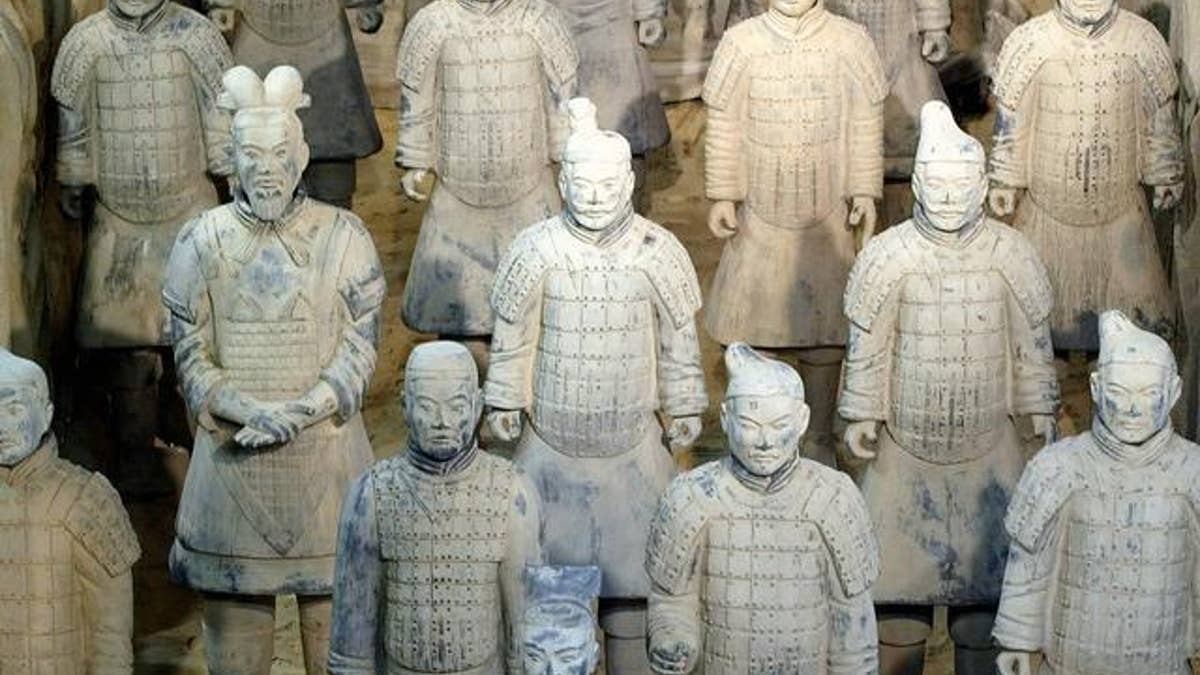
Oct. 16, 2004: Copies of Chinese terracotta soldiers, at exhibition in Berlin, Germany.
XIAN, China -- New research suggests that China's iconic Terracotta Warriors, long thought to be the guardians of its first emperor in the afterlife, may not be quite what they seem.
The tall clay figures are one of China's top tourist destinations, alongside the Great Wall and Beijing's Forbidden City. Since they were discovered by farmers in 1974 outside Xian, in northern China, it was widely accepted they were built as an army corps to guard Qin Shihuang (259-210 BC) in the afterlife.
But new research suggests that the warriors may have been ancient models used for military training, according to a study cited Friday by the official Xinhua news agency.
The warriors are too far away from the mausoleum of Qin Shihuang, the emperor who unified China, and too loosely deployed to serve as real guardians, researcher Sun Jiachun said.
"The Terracotta Warriors were found at least 0.9 miles from the mausoleum's outer walls," Sun said. "They were poorly organized and were not led by a general, which contradicts ancient China's military system and traditional beliefs that a deceased emperor should be served in the same manner as when he was alive."
According to Sun, the warriors' purpose was likely a practical one, rather than spiritual. "The first emperor and his ministers must have wanted the army to serve their kingdom, probably by using the clay figures as a teaching aid at the military school," he said.
Qin Shihuang is a key figure in Chinese history and is credited with unifying the country, as well as undertaking vast projects including the construction of a road network and the Great Wall. He was also a ruthless ruler, famed for burning books and burying scholars to suppress intellectual dissent.
More than 700,000 workers toiled on his mausoleum -- a vast subterranean city that is now a UNESCO world heritage site -- although many were entombed after completing the work so they could not reveal its secrets.
